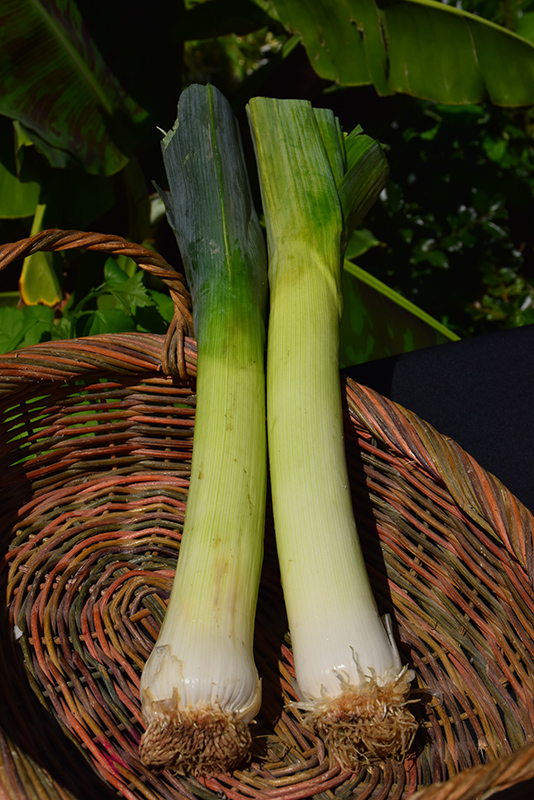>> Home
American Flag Leeks
Allium ampeloprasum var. porrum
Height: 28 inches
Spacing: 6 inches
Sunlight:
![]()
![]()
Hardiness Zone: (annual)
Description:
An easy to grow, long season selection perfect for any food lovers garden; producing long, white cylindrical stalks with thick and flat dark green leaves; mild and crisp, perfect for soups, stocks, sauces and roasting; flavor enhances after a light frost
Edible Qualities
American Flag Leeks is an annual vegetable plant that is commonly grown for its edible qualities. The entire above-ground parts of the plant are edible, and are typically harvested when mature. The edible parts have a mild taste and a crisp texture.
The plant is most often used in the following ways:
- Cooking
- Baking
- Sauces
Planting & Growing
American Flag Leeks will grow to be about 28 inches tall at maturity, with a spread of 12 inches. When planted in rows, individual plants should be spaced approximately 6 inches apart. This fast-growing vegetable plant is an annual, which means that it will grow for one season in your garden and then die after producing a crop.
This plant is typically grown in a designated vegetable garden. It does best in full sun to partial shade. It does best in average to evenly moist conditions, but will not tolerate standing water. It is not particular as to soil pH, but grows best in rich soils. It is highly tolerant of urban pollution and will even thrive in inner city environments. Consider applying a thick mulch around the root zone over the growing season to conserve soil moisture. This species is not originally from North America.
American Flag Leeks is a good choice for the vegetable garden, but it is also well-suited for use in outdoor pots and containers. With its upright habit of growth, it is best suited for use as a 'thriller' in the 'spiller-thriller-filler' container combination; plant it near the center of the pot, surrounded by smaller plants and those that spill over the edges. Note that when growing plants in outdoor containers and baskets, they may require more frequent waterings than they would in the yard or garden.
